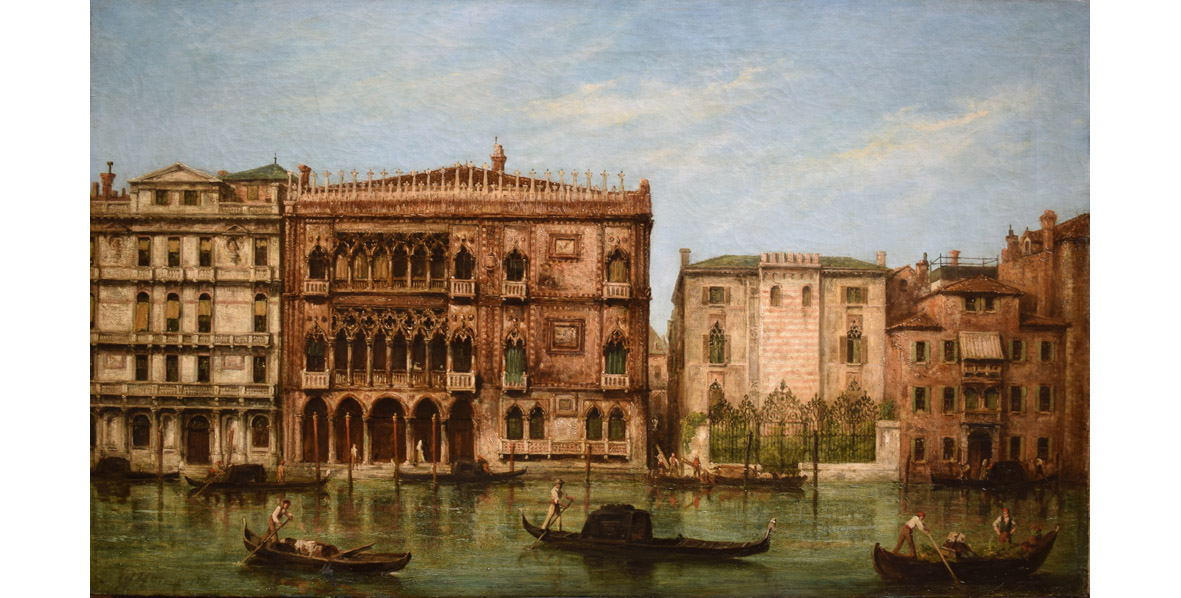Project Description
William Henry Haines (1812 – 1884), Ca’ d’Oro in Venice
Oil on canvas cm 61 x 101 signed (W Henry) and dated (unreadable) lower left. On the back, labels that attest the painting’s exposure to some exhibitions, and an inscription bearing the name of the author and the title of the work.
INFO: if you need more information
Painter in contact with the Society of British Artists, the British Institution and the Royal Academy, William Henry Haines can be considered worthy heir to the tradition of Venetian vedutism. His palette brings back the marshy atmosphere of the Serenissima, with its famous monuments, its typical views, portrayed from life with a lyrical melancholy. This is the case, for example, of this extraordinary revival of Ca ‘d’Oro seen from the Grand Canal, immortalized by the painter, in the mid-nineteenth century, after the building had been restored by engineer Giovan Battista Meduna at the behest of the then owner, Alessandro Trubetzkoi.
To dominate the composition designed by Haines is the facade of the Ca’ d’Oro which is characterized by the marked asymmetrical between the left side, in which three perforated strips are superimposed (portico for docking the boats on the ground floor and open spaces to the floors upper), and the right wing, where the masonry with precious marble prevails with single isolated square openings. The English painter portrays with a ductus dense and material the only element that gives continuity to the facade, conditioning and dominating it, the large frame with the overlying crenellation, and the triple spiral columns that run along the edges of the façade.
More than in Canaletto, Haines seems to look at the pictorial manner of a Francesco Guardi, whose atmospheres are more rarefied and distorted, often even more gloomy and disturbing. From Guardi the British painter inherited a reading of a Venice filtered through his eyes, a Venice full of tension and feelings: the result is a landscape painting that, despite the faithful reconstruction, to the limits of the photographic vision, of the painted architecture, manages to arouse emotions and provide cues for different reflections. This sensitivity, veiled with a subtle restlessness, makes Haines one of the poets of the landscape, active across the Channel, more appreciated along the nineteenth century.






